In the year 1969, the sea was reclaimed in Bandra
And a way of life changed forever.
50 years later memories of the sea and that life were starting to dim.
That invisible history was what we went looking for.
We found a sea of joy and pain which we brought back to the neighbourhood.
Pictures of the past sat with documents from the past. Hand written notes explained how history was made and changed. Visual art, installations, performance art and oral documentation strung across a net of memories brought alive what we had been recording for months.
It was our way of honouring the memory of Bandra as it was.
And a way of life changed forever.
50 years later memories of the sea and that life were starting to dim.
That invisible history was what we went looking for.
We found a sea of joy and pain which we brought back to the neighbourhood.
Pictures of the past sat with documents from the past. Hand written notes explained how history was made and changed. Visual art, installations, performance art and oral documentation strung across a net of memories brought alive what we had been recording for months.
It was our way of honouring the memory of Bandra as it was.
The exhibition weaves the Modi script — an ancient, now nearly forgotten form of Marathi writing — into its visual language.
Discovered while going through old family documents, the script serves as a metaphor for erased histories and lost cultural memory.
Like the reclamation of Bandra Creek, which buried stories, lives, and landscapes, the script reflects what is no longer legible in our collective memory.
It stands as a quiet reminder that the past, though obscured, still leaves traces — waiting to be seen, read, and reclaimed.
NET OF MEMORIES
"During the low tide, we used to go swimming from Bazaar Road to Shivaji Park.
That time swimming was our hobby, because we had the whole ocean for us"
Come wade into the sea with us. We've brought a haul of fish and memories from those who lived along Bandra's seashore before it was reclaimed.
You can walk around, pick them out of the net, read them, and put them back in any part of the net you like.
Thereby creating an ever changing art piece that ties the past to the present.
That time swimming was our hobby, because we had the whole ocean for us"
Come wade into the sea with us. We've brought a haul of fish and memories from those who lived along Bandra's seashore before it was reclaimed.
You can walk around, pick them out of the net, read them, and put them back in any part of the net you like.
Thereby creating an ever changing art piece that ties the past to the present.
An audio recording of the conversations we had with the elders was layered into a recording we took of the sea. Played on a speaker, it immersed our audience into the Net of Memories.

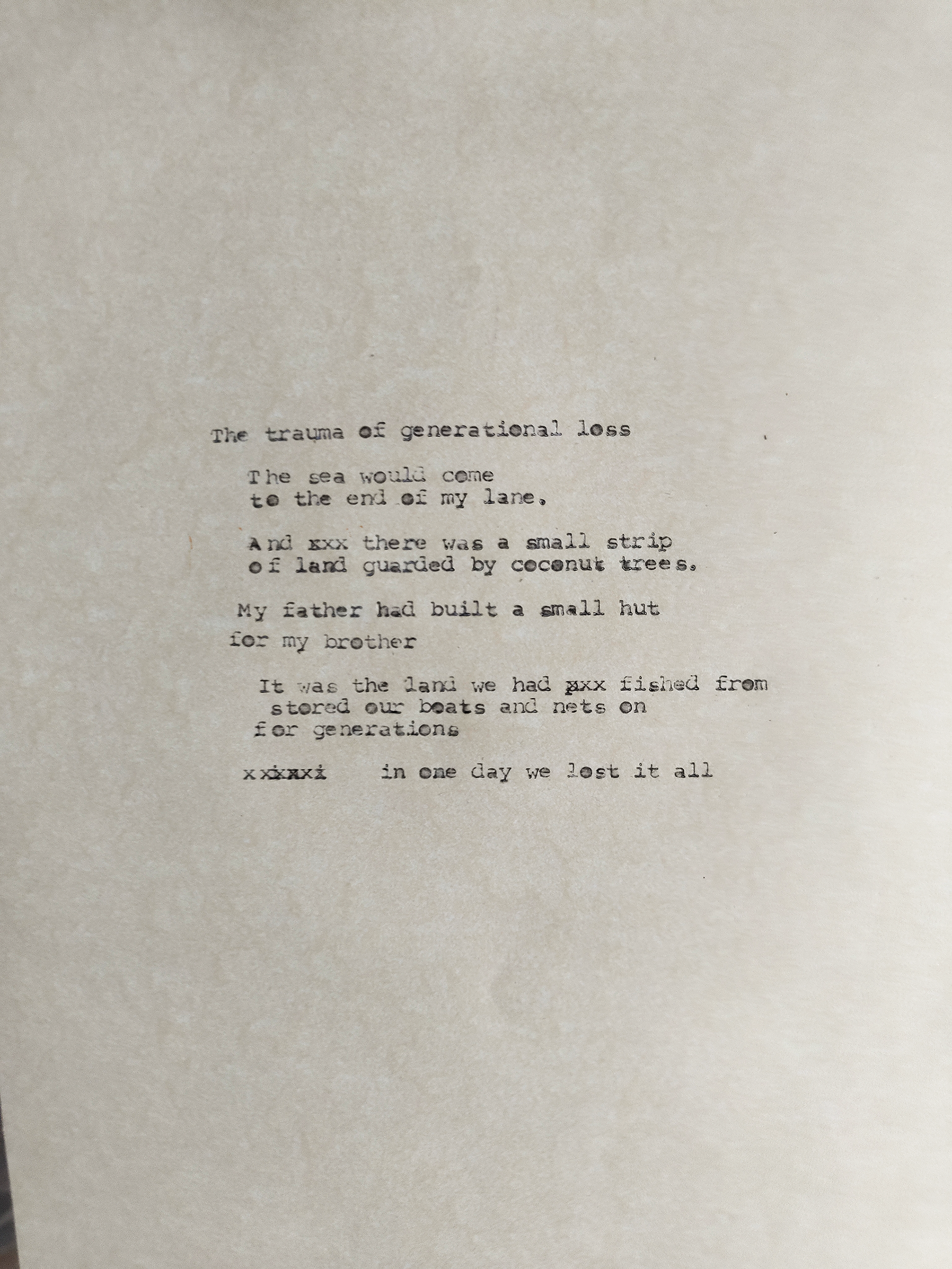

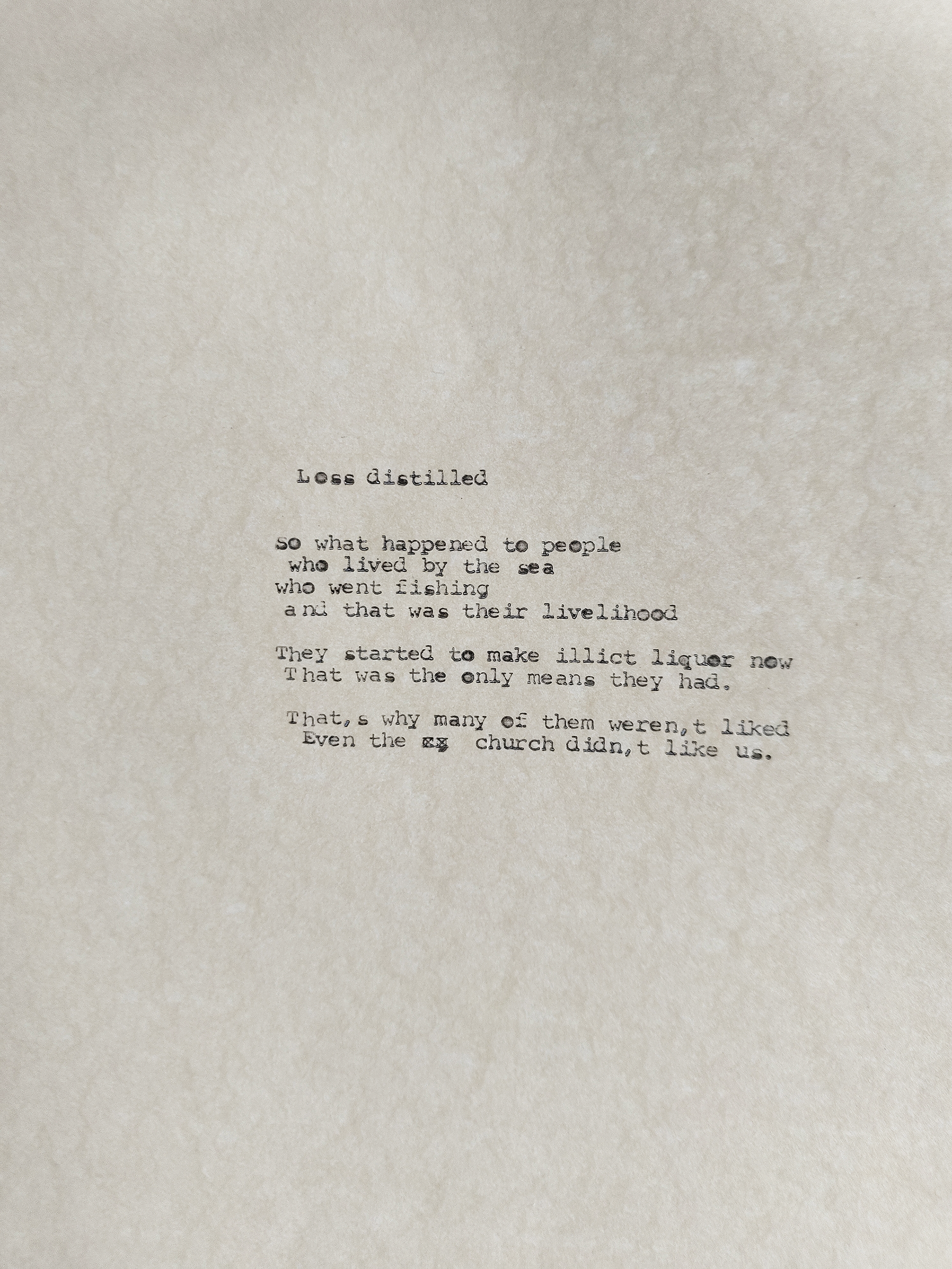
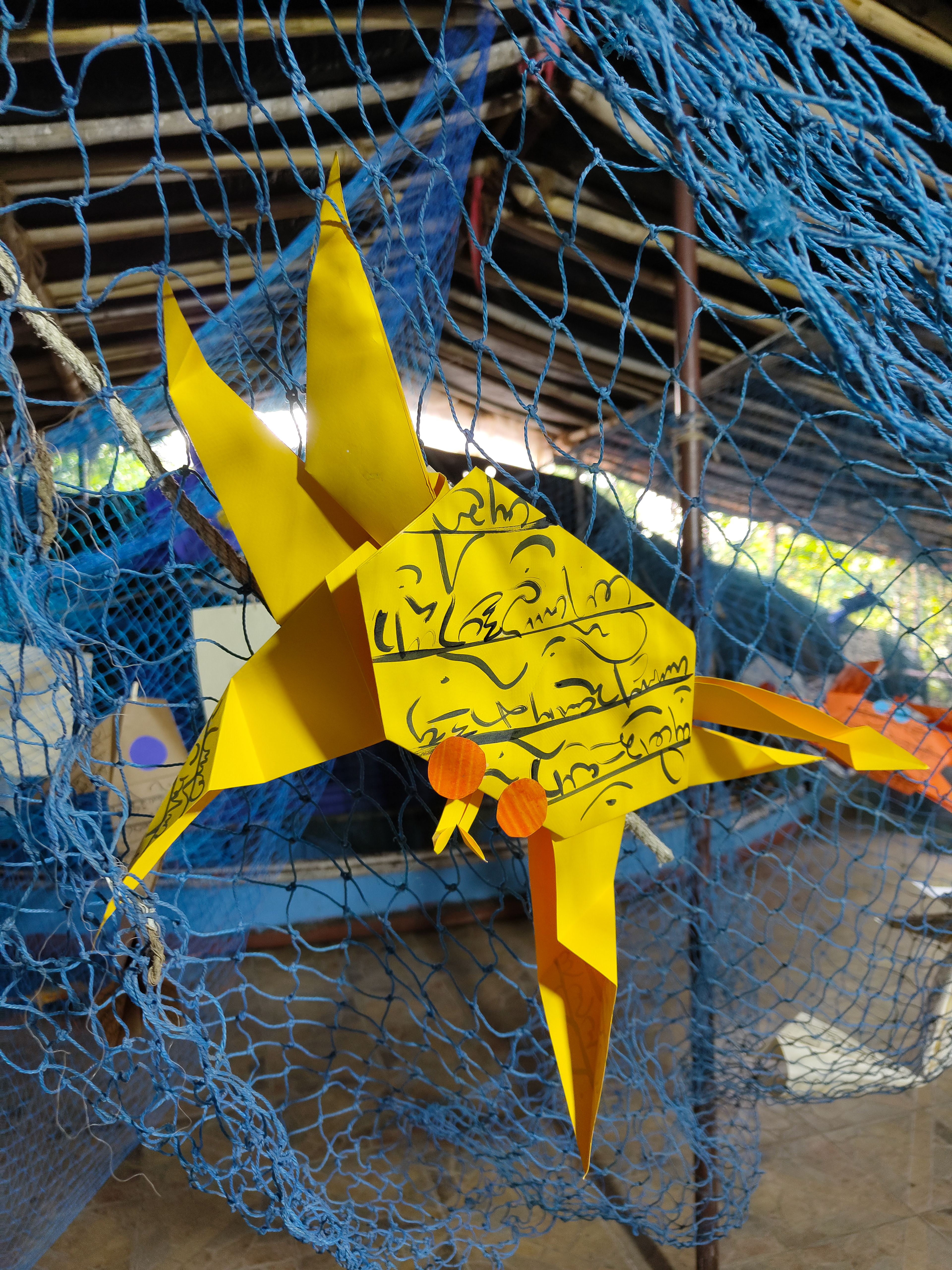

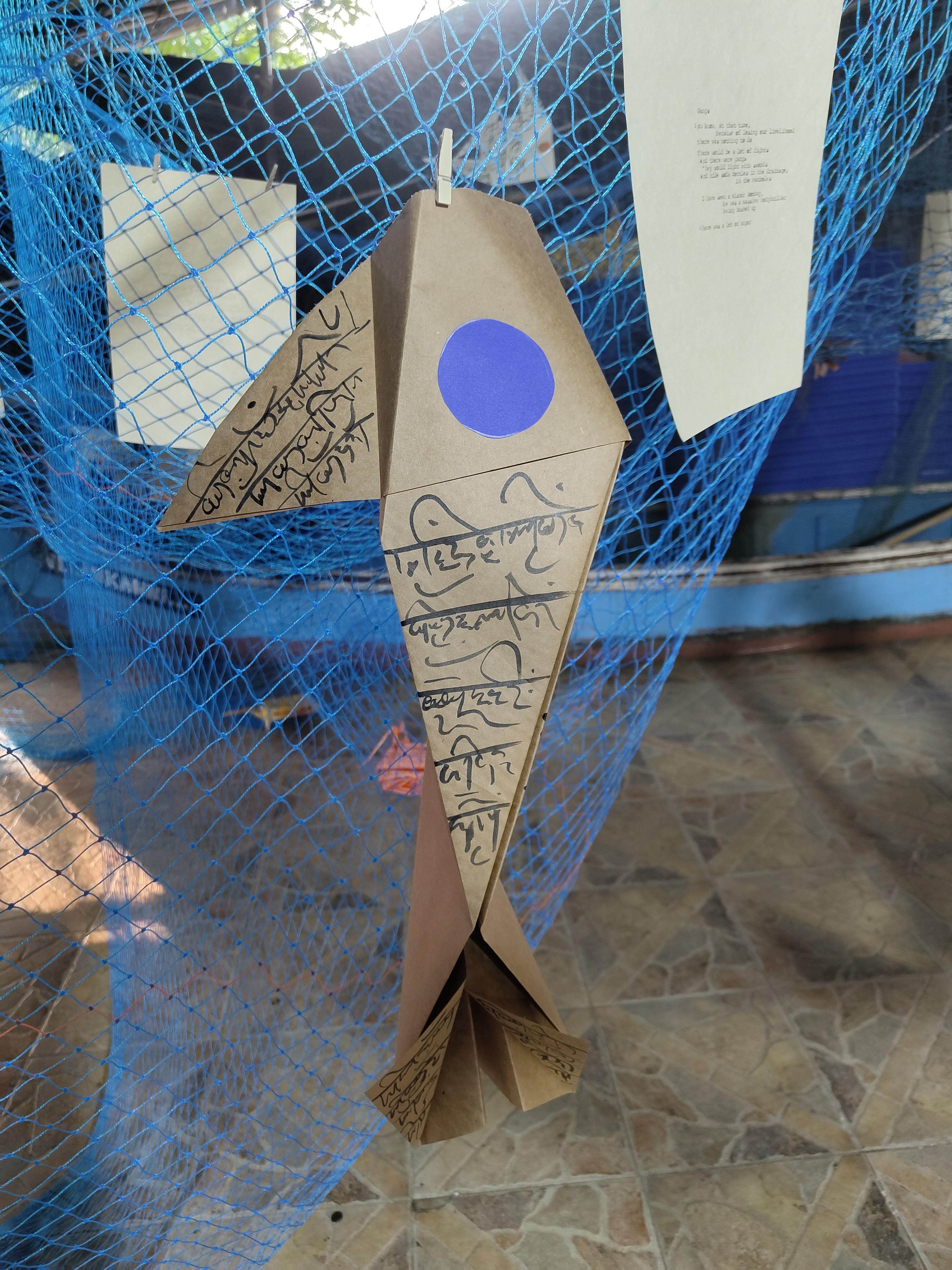

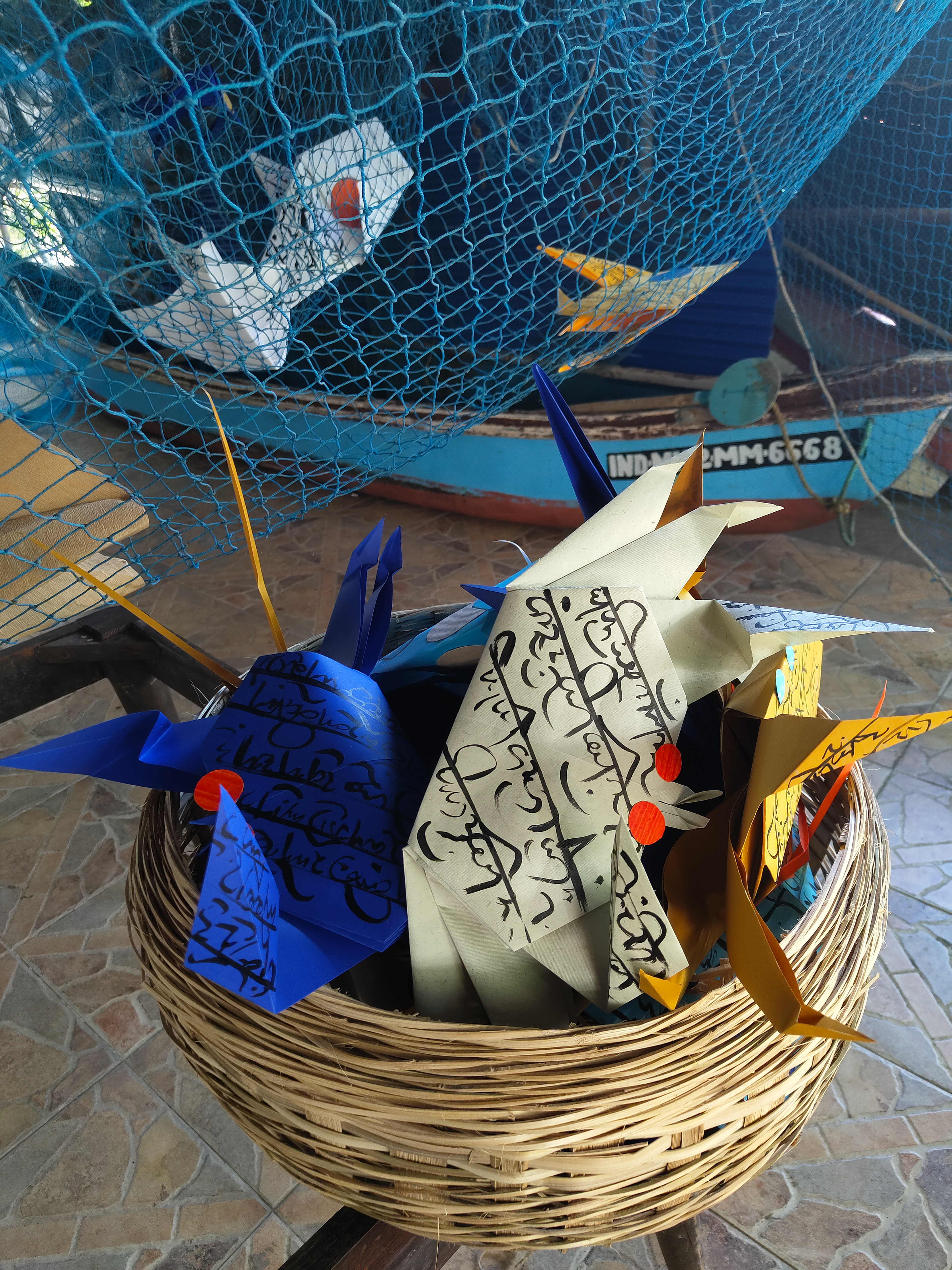

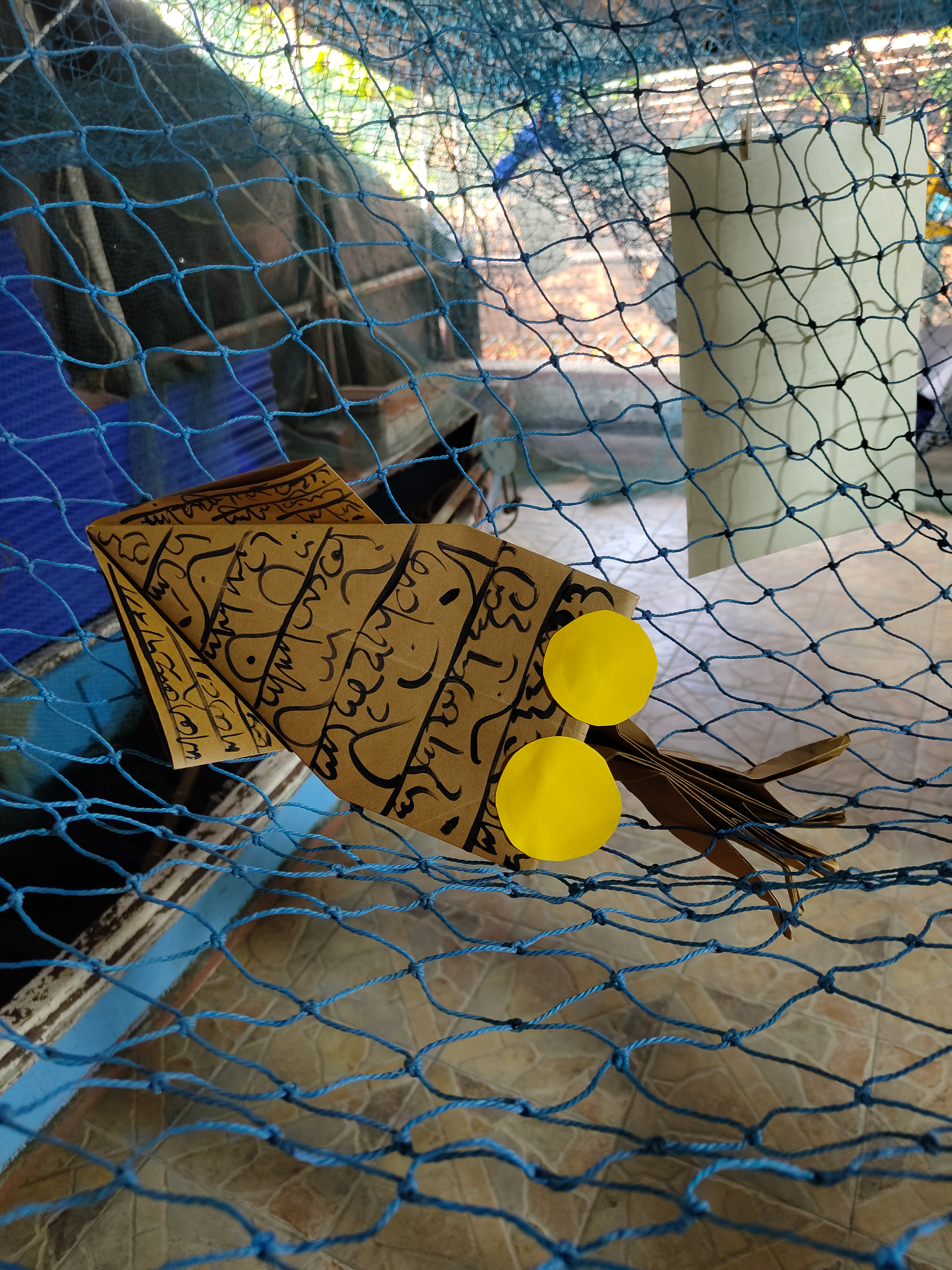

SEA LOST COLLAGE
"I sometimes think about what we had and why it went away.
For a song it went away."
Sea Lost shows the scale in which reclamation physically affected the community.
It uses blueprints of this house to outline Bandra, while the Modi script which is now lost to time, depicts the lost sea.
A petition dated March 1933 asserts the ancient fishing rights of the fishermen in the Bandra creek, and serves as a reminder that what they lost during reclamation was
not just their future, but also their past.
The collage was made with original documents that date back over 100 years.
For a song it went away."
Sea Lost shows the scale in which reclamation physically affected the community.
It uses blueprints of this house to outline Bandra, while the Modi script which is now lost to time, depicts the lost sea.
A petition dated March 1933 asserts the ancient fishing rights of the fishermen in the Bandra creek, and serves as a reminder that what they lost during reclamation was
not just their future, but also their past.
The collage was made with original documents that date back over 100 years.
SEA LOST ANIMATION
An animated video that represents the collage artwork.
Using old documents found in the house, and the Modi script, it depicts Bandra pre and post reclamation.
Loss is always measured in land, but this artwork measures loss by showing the amount of sea
taken away.
Using old documents found in the house, and the Modi script, it depicts Bandra pre and post reclamation.
Loss is always measured in land, but this artwork measures loss by showing the amount of sea
taken away.


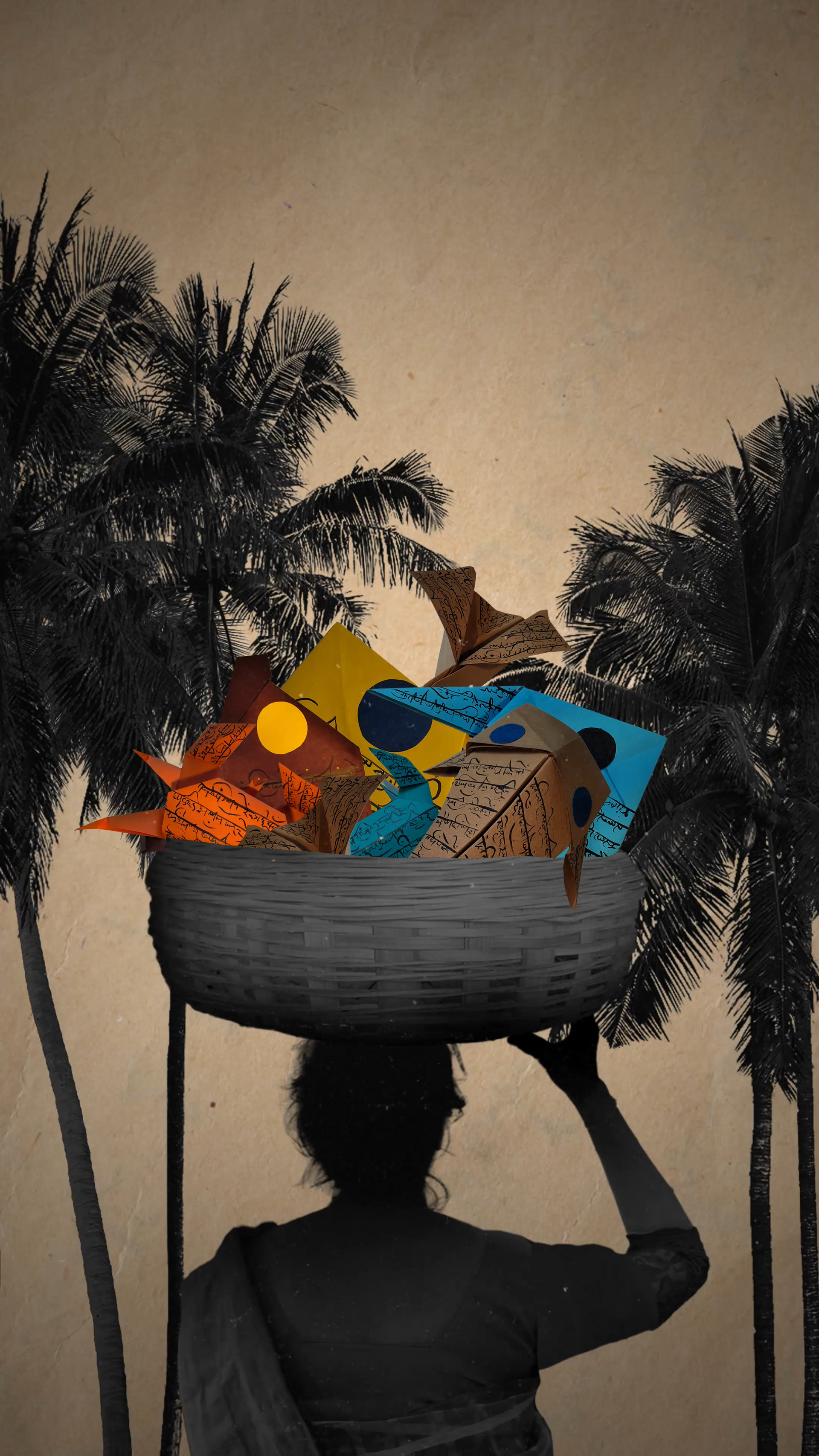




WHERE THE SEA WAS
"During high tide, from this wall, we could dive straight into the sea."
You are standing at ground zero.
The sea would crash right into the compound wall you can see from this window.
Tucky and his family and
friends would push out a boat, and row to Mahim from here.
We want you to remember that the sea belongs to all of us. That at one time it came right up to our shore. That the indigenous communities of Bandra depend on this for their livelihood.
The reason to keep you at a distance from Where The Sea Was, is to make you understand the trauma of separation. The blue tin sheets now ubiquitous to a redeveloping Bandra, are repurposed to represent a lost sea and a lost time.
You are standing at ground zero.
The sea would crash right into the compound wall you can see from this window.
Tucky and his family and
friends would push out a boat, and row to Mahim from here.
We want you to remember that the sea belongs to all of us. That at one time it came right up to our shore. That the indigenous communities of Bandra depend on this for their livelihood.
The reason to keep you at a distance from Where The Sea Was, is to make you understand the trauma of separation. The blue tin sheets now ubiquitous to a redeveloping Bandra, are repurposed to represent a lost sea and a lost time.
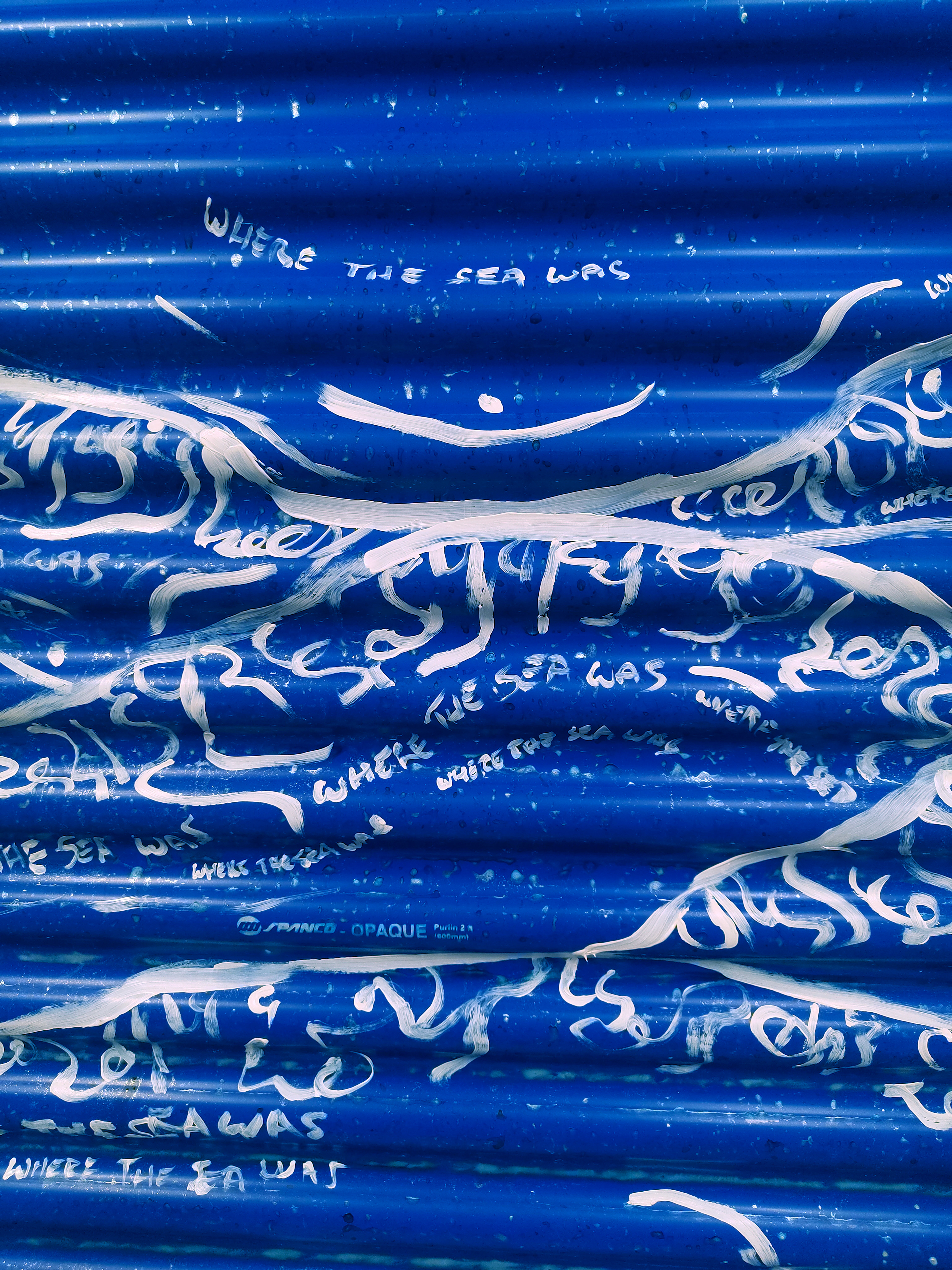
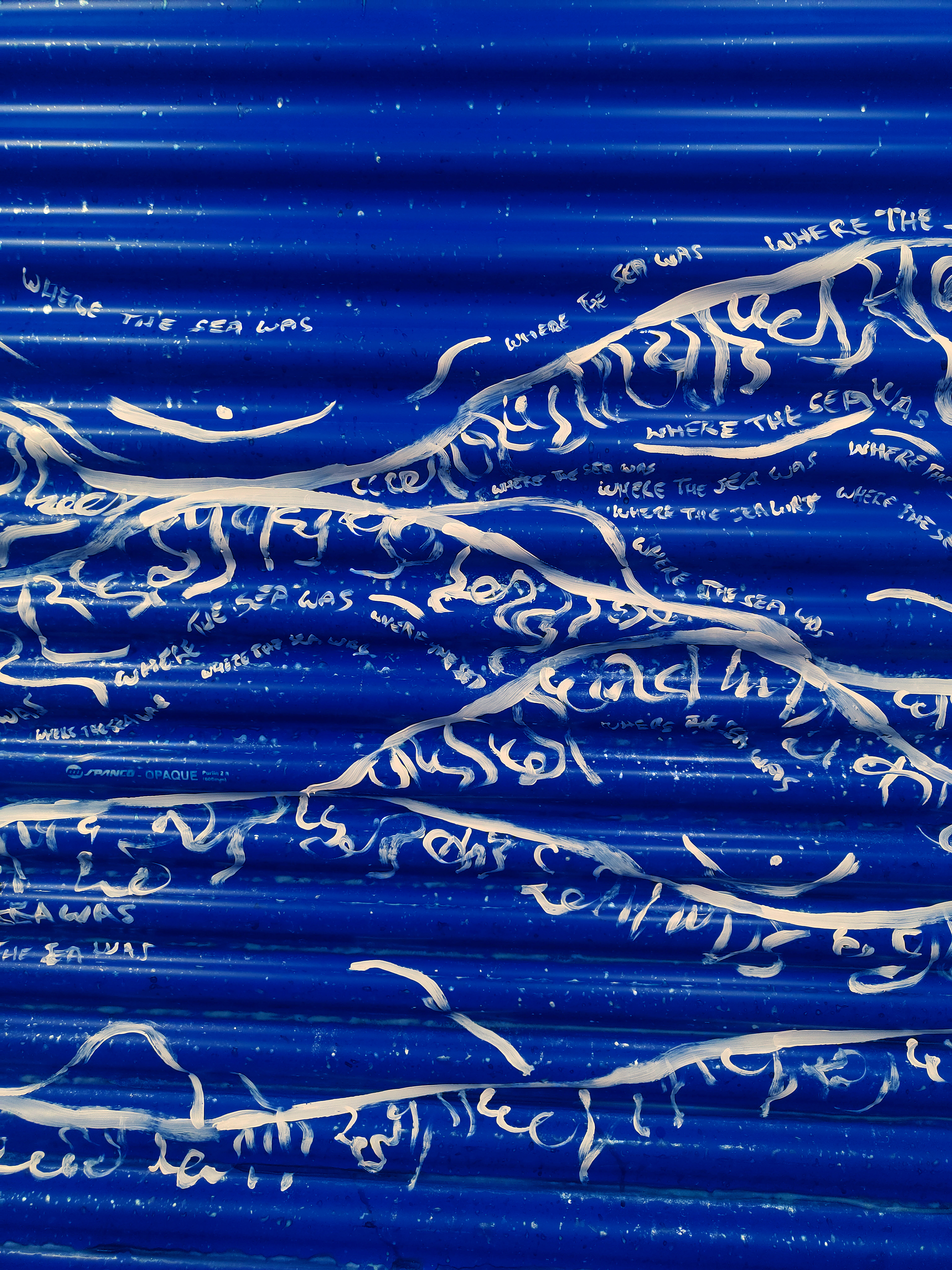
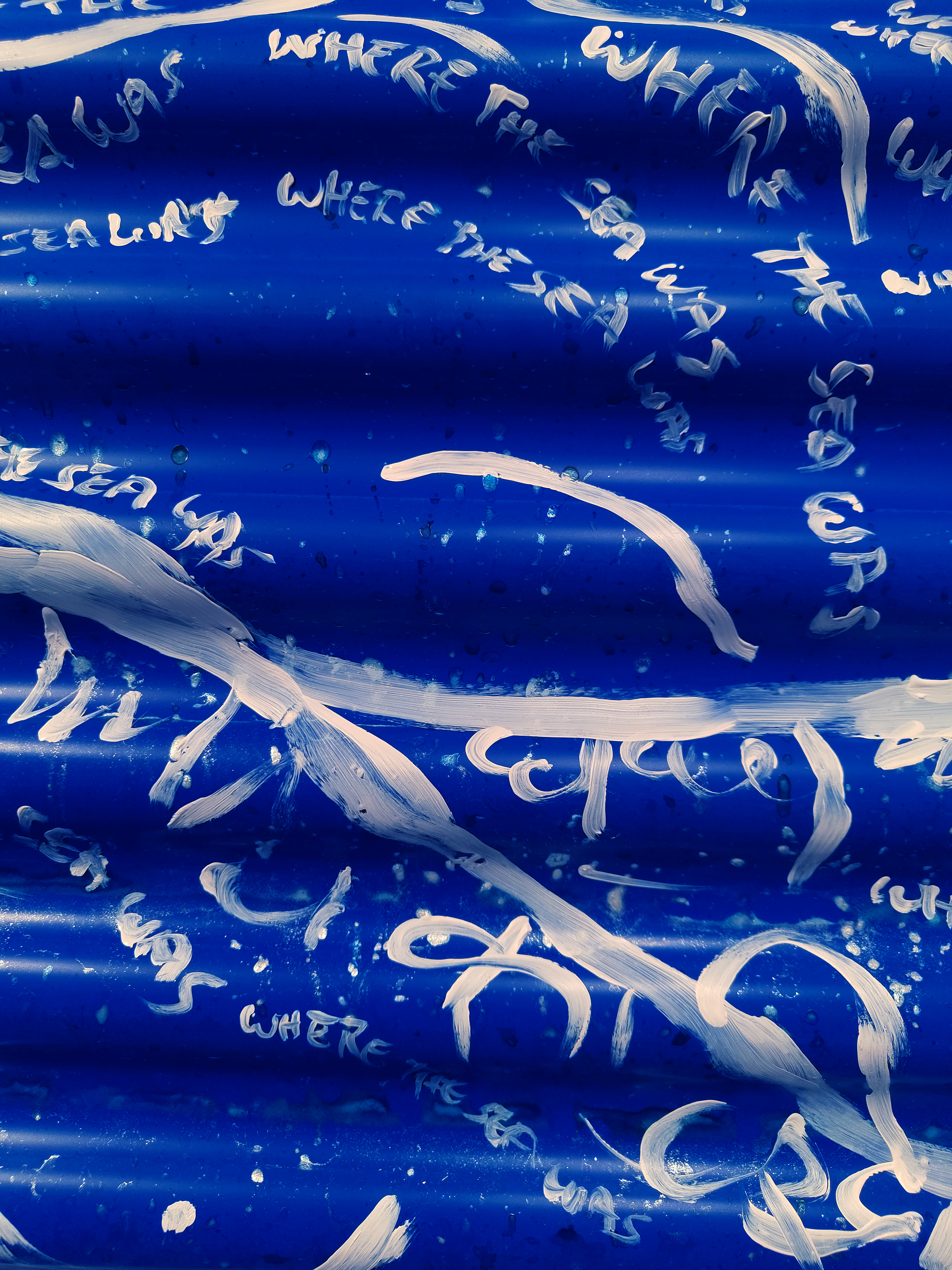


THROUGH YOU I SEE,
THROUGH ME I MOURN
"On Easter there was a tradition, we would release ducks in the sea, and then
there would be a race to catch those ducks.
Whoever caught them kept them.
You know it's impossible to catch a duck in water, right?"
Through You I See, Through Me I Mourn is a performance art piece that juxtaposes the past with the present.
It takes the theme of memories that one generation passes down to the other. But in that exchange, the gap in the tangible reality is wider by the year.
Do generations in Bandra think of the sea in the same way? They don't. The reclamation has snatched that continuity from them. What the older generation remembers as a happy carefree time, teeming with swimming and fishing, the younger generation now finds it difficult to comprehend, as they see a distant shoreline, teeming with plastic and rubbish.
there would be a race to catch those ducks.
Whoever caught them kept them.
You know it's impossible to catch a duck in water, right?"
Through You I See, Through Me I Mourn is a performance art piece that juxtaposes the past with the present.
It takes the theme of memories that one generation passes down to the other. But in that exchange, the gap in the tangible reality is wider by the year.
Do generations in Bandra think of the sea in the same way? They don't. The reclamation has snatched that continuity from them. What the older generation remembers as a happy carefree time, teeming with swimming and fishing, the younger generation now finds it difficult to comprehend, as they see a distant shoreline, teeming with plastic and rubbish.




HISTORY REVISITED
The art show started with us going through the amazing collection of documents the Curzai family had preserved and collected from over a 100 years.
With a little help from academic friends, we were able to decipher an amazing narrative regarding the history of Bandra creek and the constant battle its indigenous inhabitants had with local authorities over their right to fish in the waters that their ancestors have from time immemorial.
A battle that they eventually lost, but the acts of resilience, the fear of authorities and the complete refusal of acknowledging indigenous knowledge inspired us to put this show together.
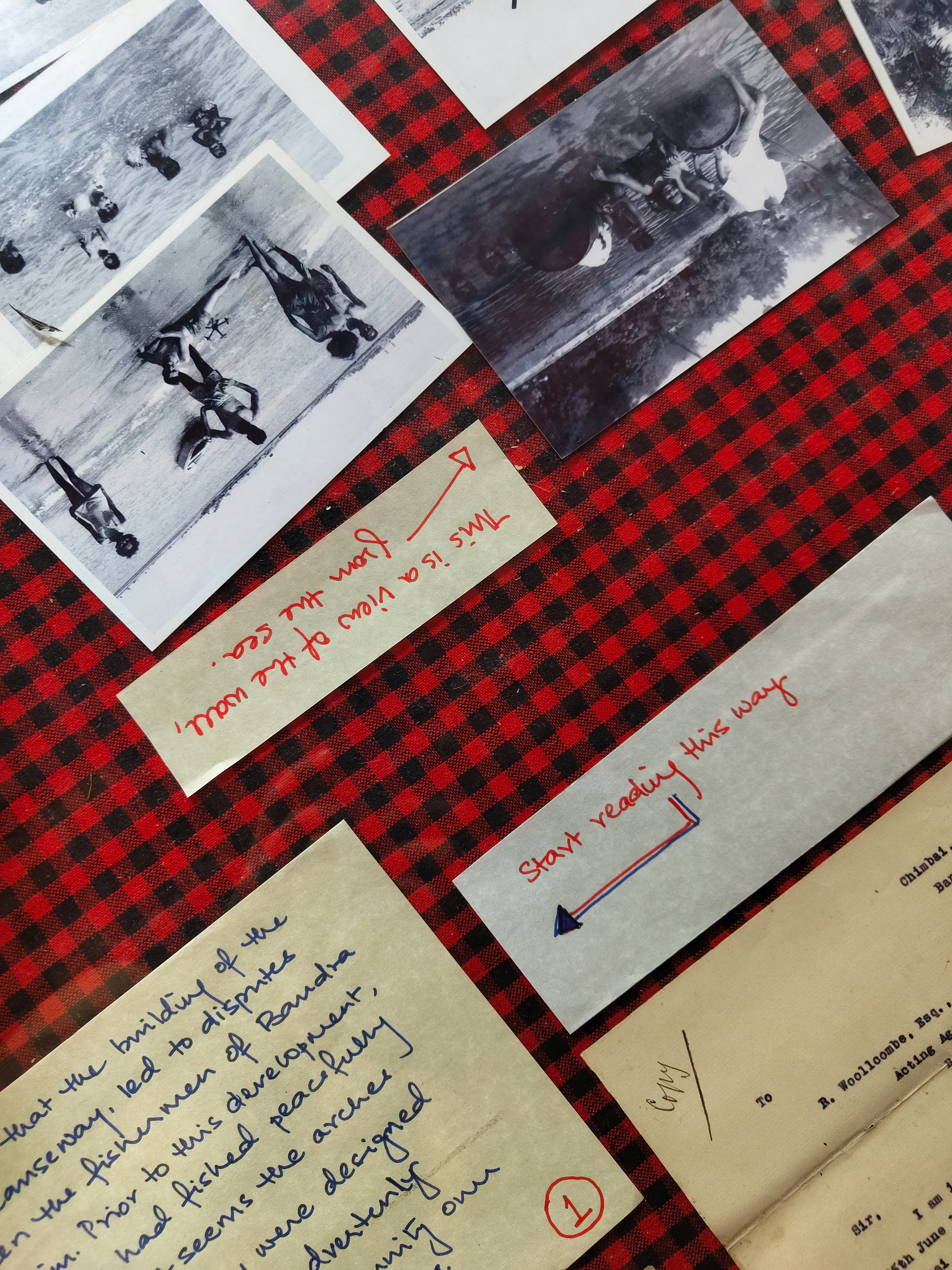
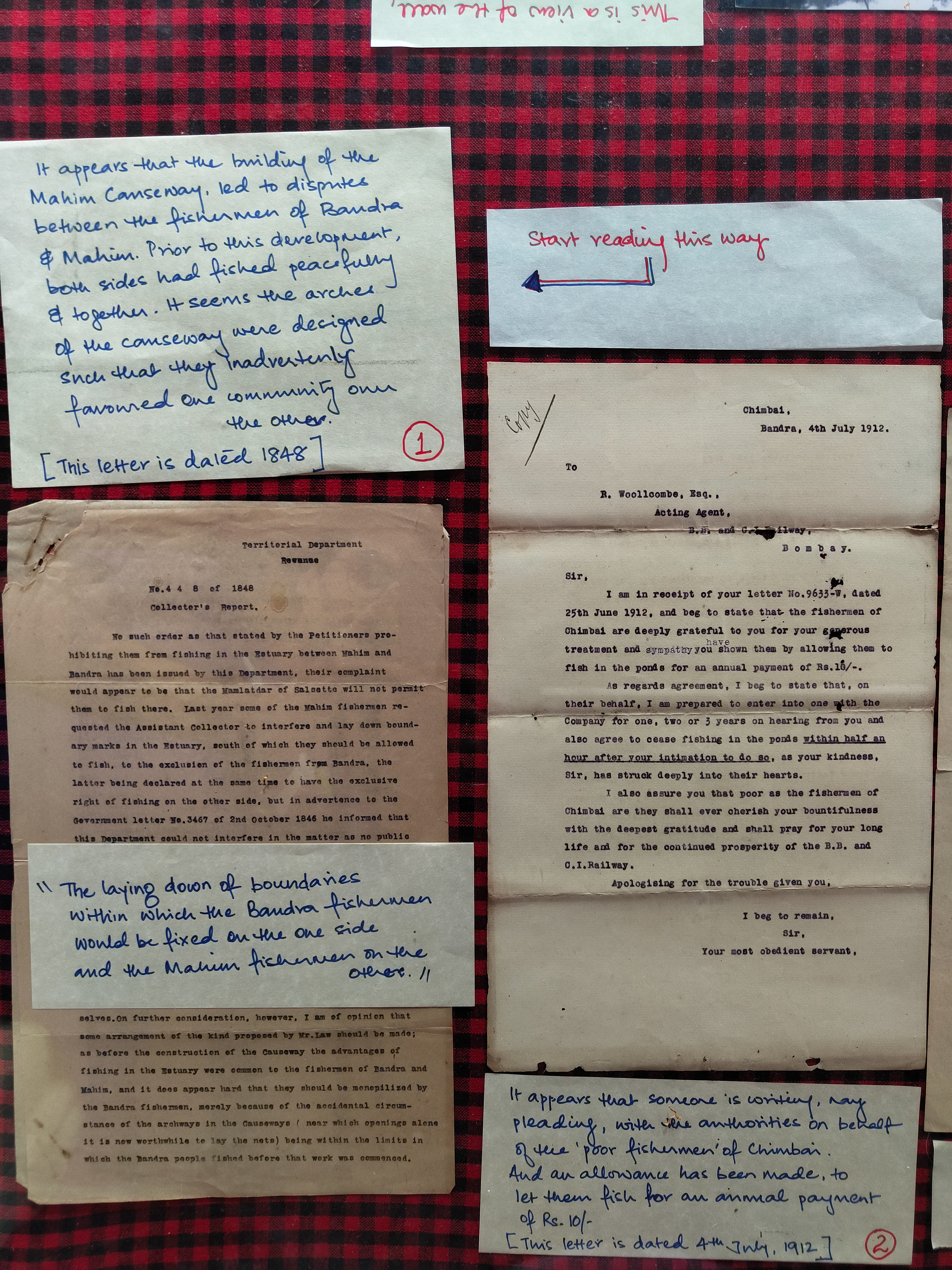
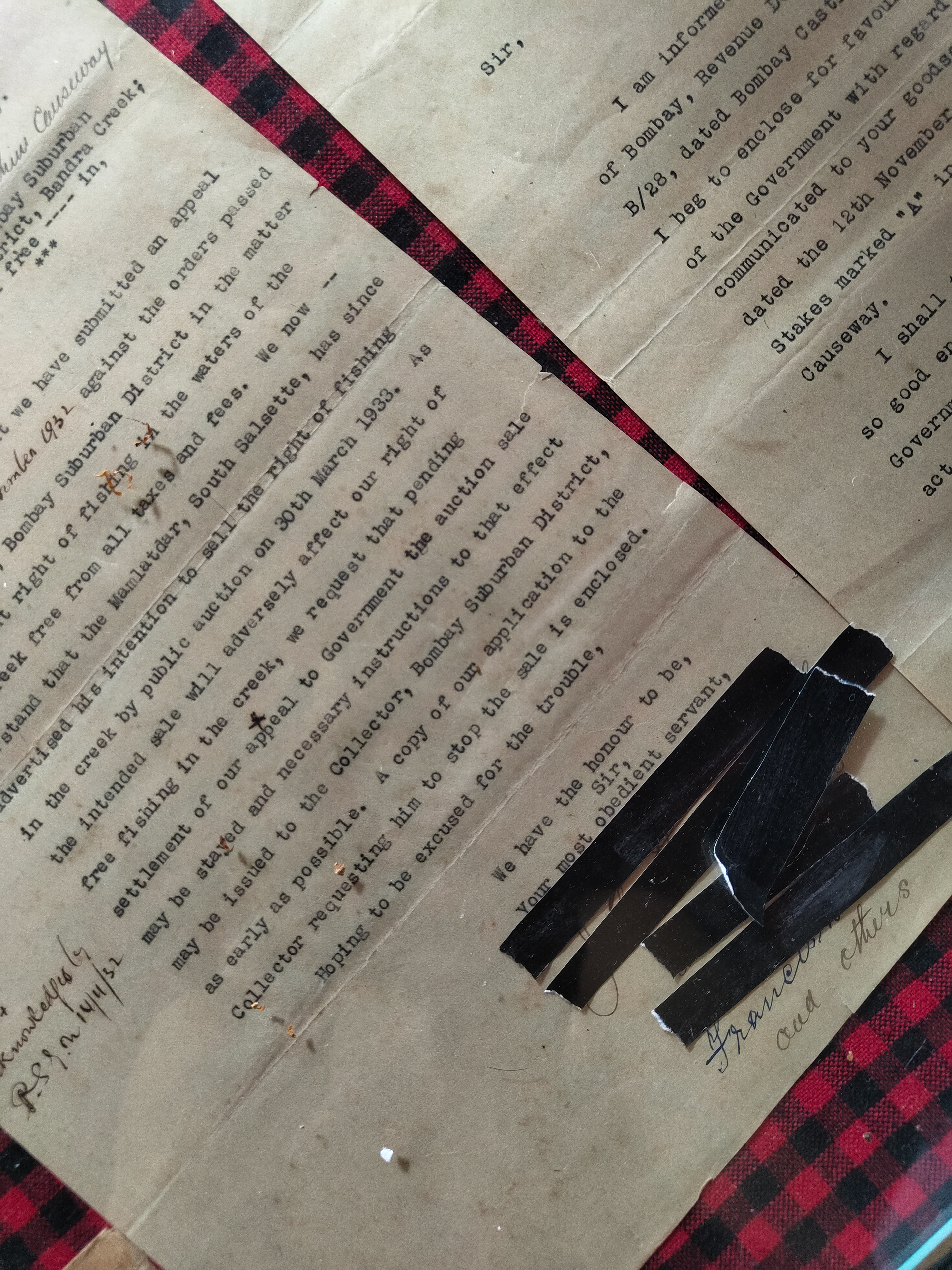
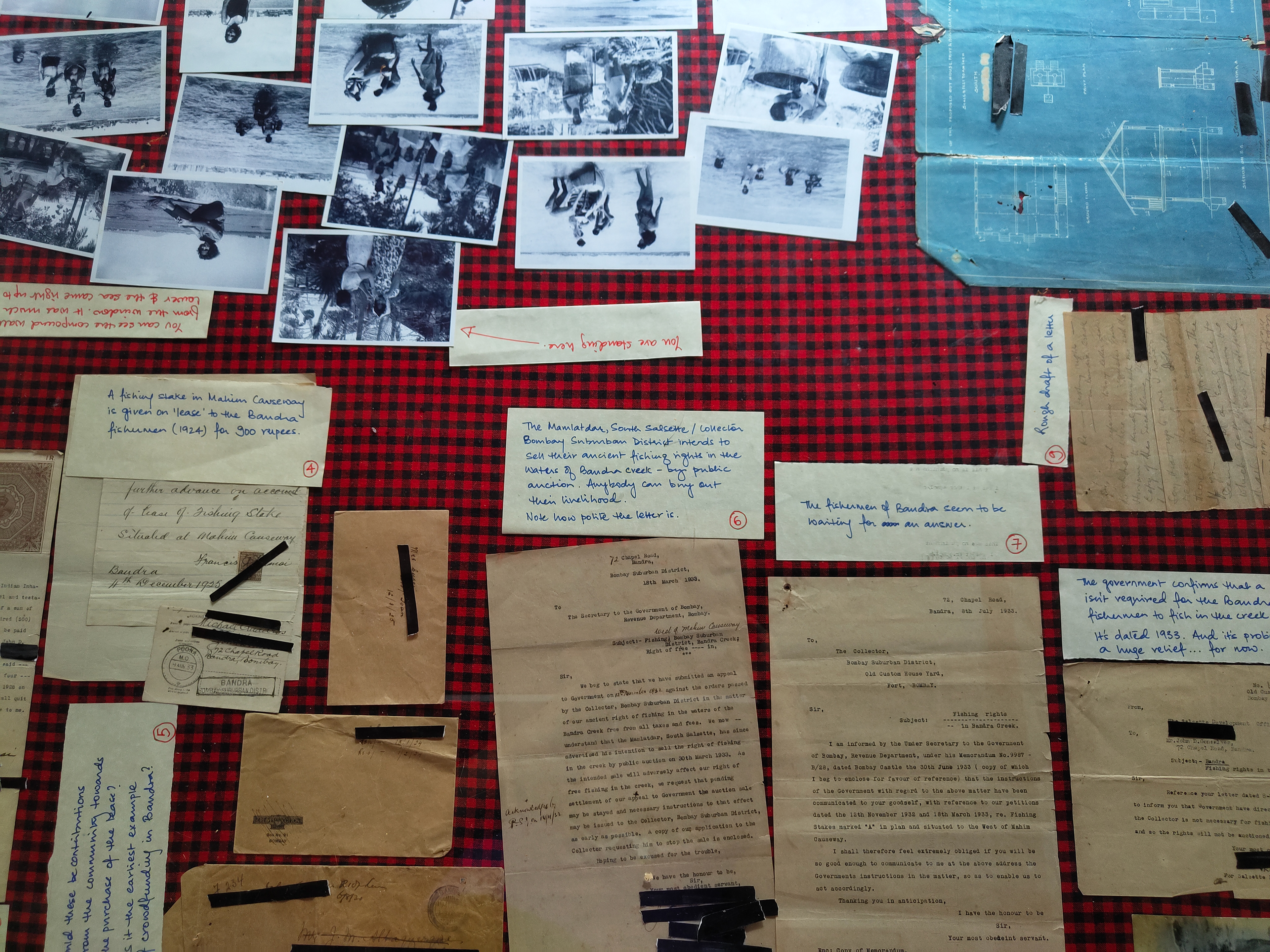

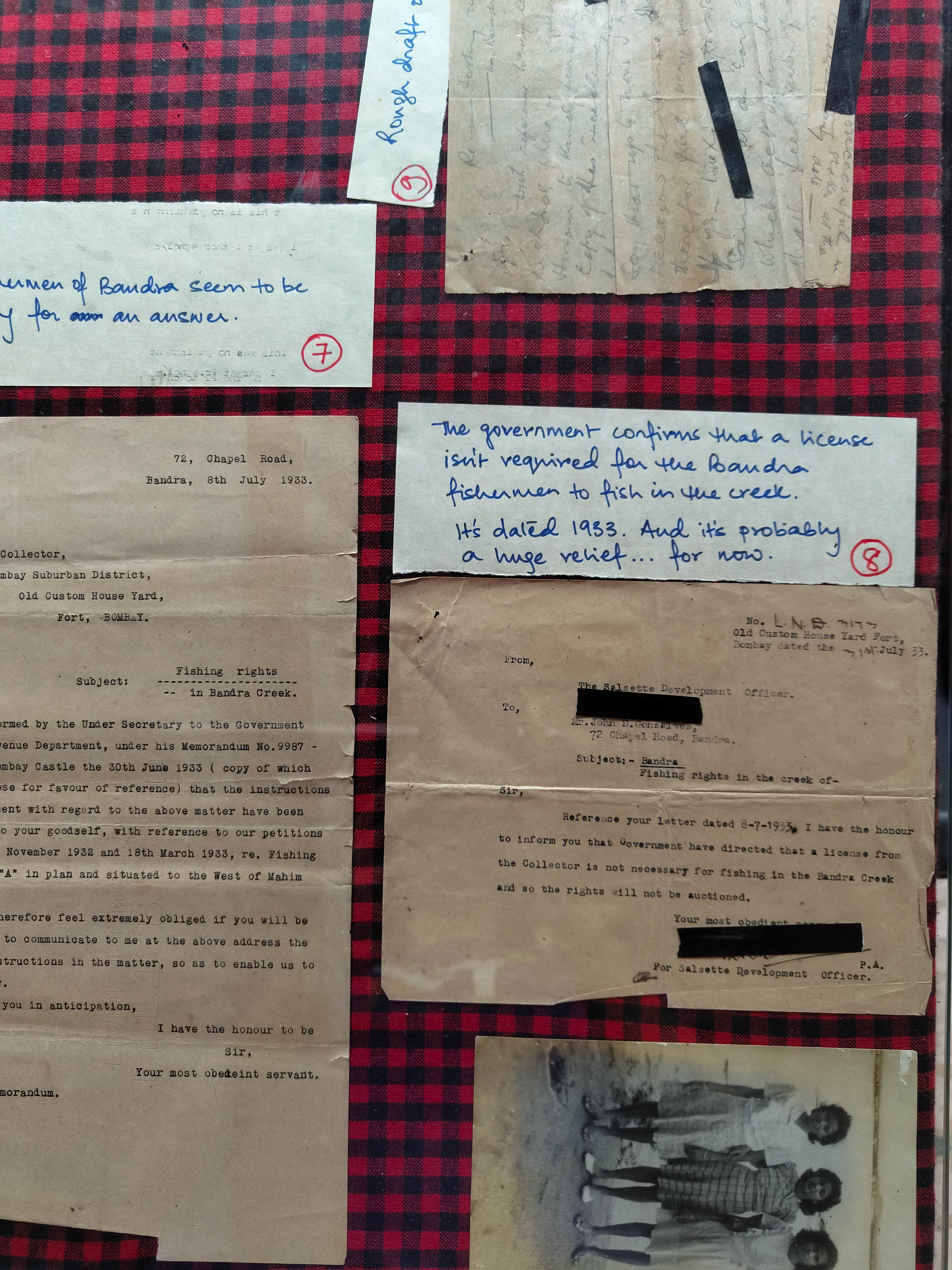

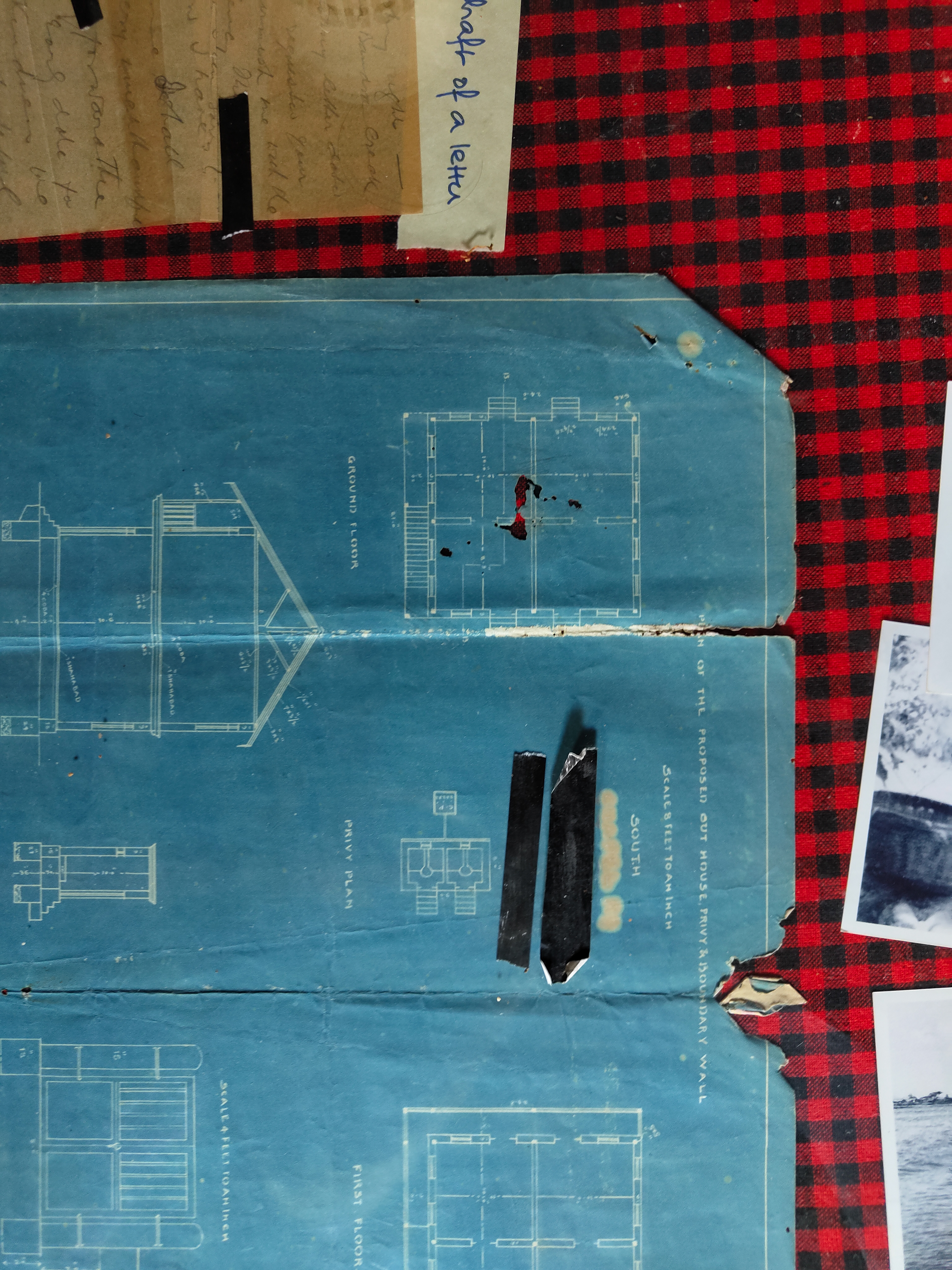


Thank you for taking the time to go through this work. Although we focused mainly on the indigenous East Indian inhabitants of Bandra.
We would like to pay our respects to all indigenous communities around the world who are displaced through the lies of Devilopment.
Only together we can change the narrative and one day live in a world where empathy is valued more than profit.
